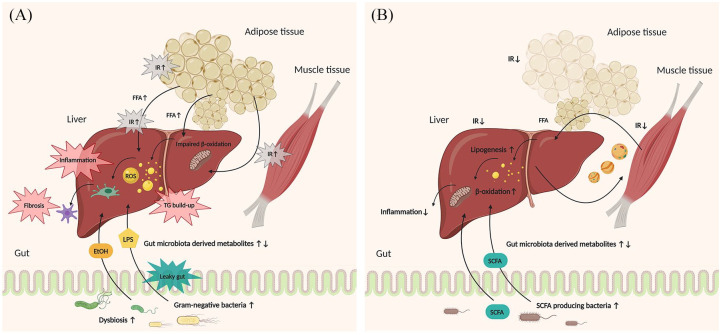Figure 1.
Mechanisms by which exercise and gut microbiome may affect NAFLD.
(A) Sedentary situation. Overview of the pathogenesis of NAFLD and the relationship of the gut microbiome in the pathogenesis. A sedentary lifestyle has led to the accumulation of TGs in the liver, due to IR in the peripheral organs and the liver itself, resulting in the production of ROS, and therefore, inflammation and further fibrosis. Dysbiosis and increased gut permeability allow LPS derived from gram-negative bacteria and ethanol synthesized from EtOH-producing bacteria to reach the liver through the portal vein and drive lipid accumulation and inflammation in the liver. (B) Physically active situation. Simplified overview of the beneficial effects of exercise and the gut microbiome on NAFLD. IR is ameliorated by exercise increasing insulin sensitivity, and normalizing lipid metabolism in peripheral tissues and in the liver. Exercise affects the gut microbiota composition, and this increases the abundance of SCFA-producing bacteria and thereby increases the production of SCFAs that can reach the liver.
EtOH, ethanol; FFA, free fatty acids; IR, insulin resistance; LPS, lipopolysaccharide; NAFLD, non-alcoholic fatty liver disease; NASH, non-alcoholic steatohepatitis; ROS, reactive oxygen species; SCFA, short-chain fatty acid; TGs, triglycerides.

